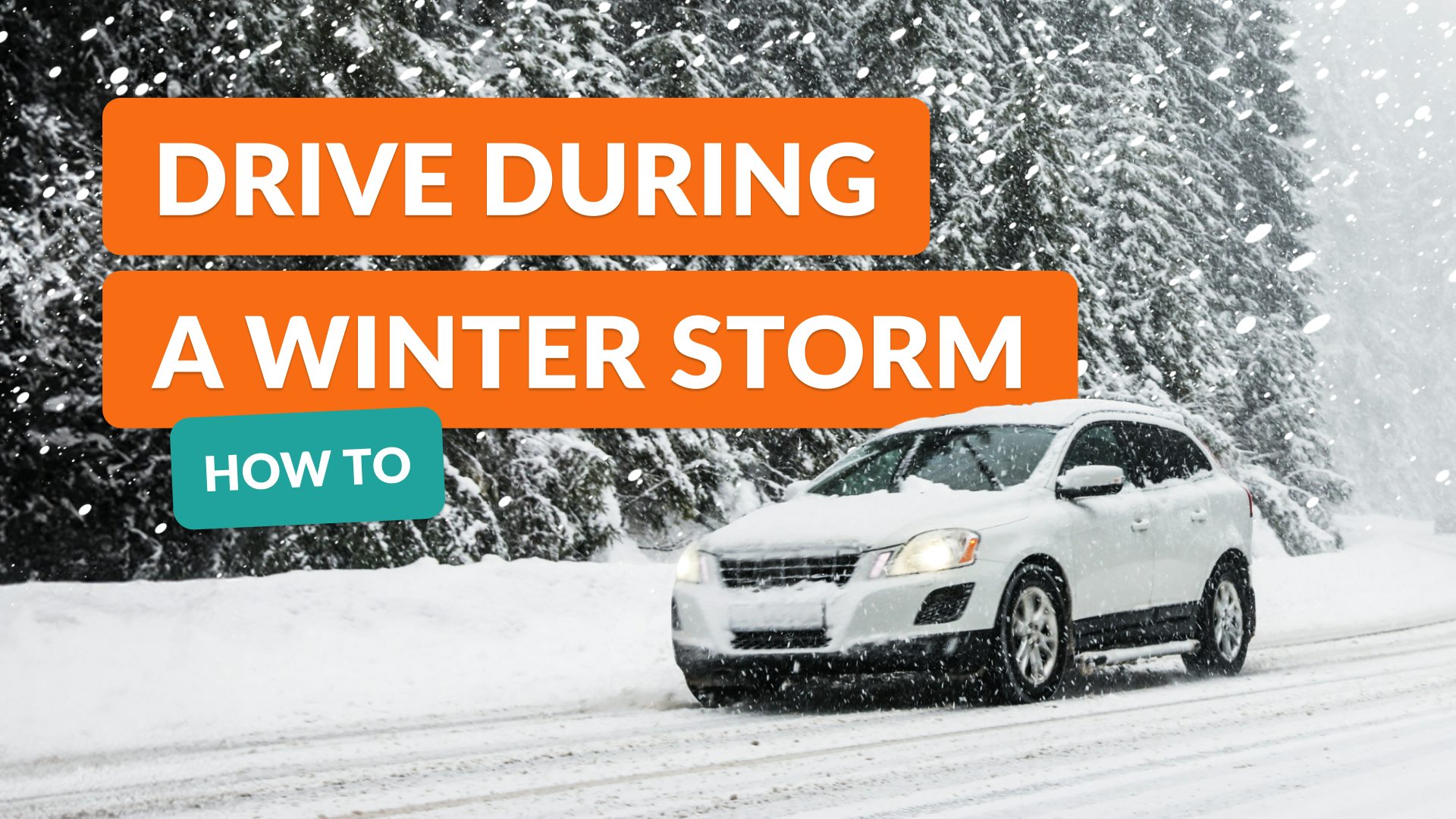
How to Drive During a Winter Storm: 10 Tips to Stay Safe
This guide covers the best tips for preparing and handling winter storm driving.
What are the Dangers of Driving in a Winter Storm?
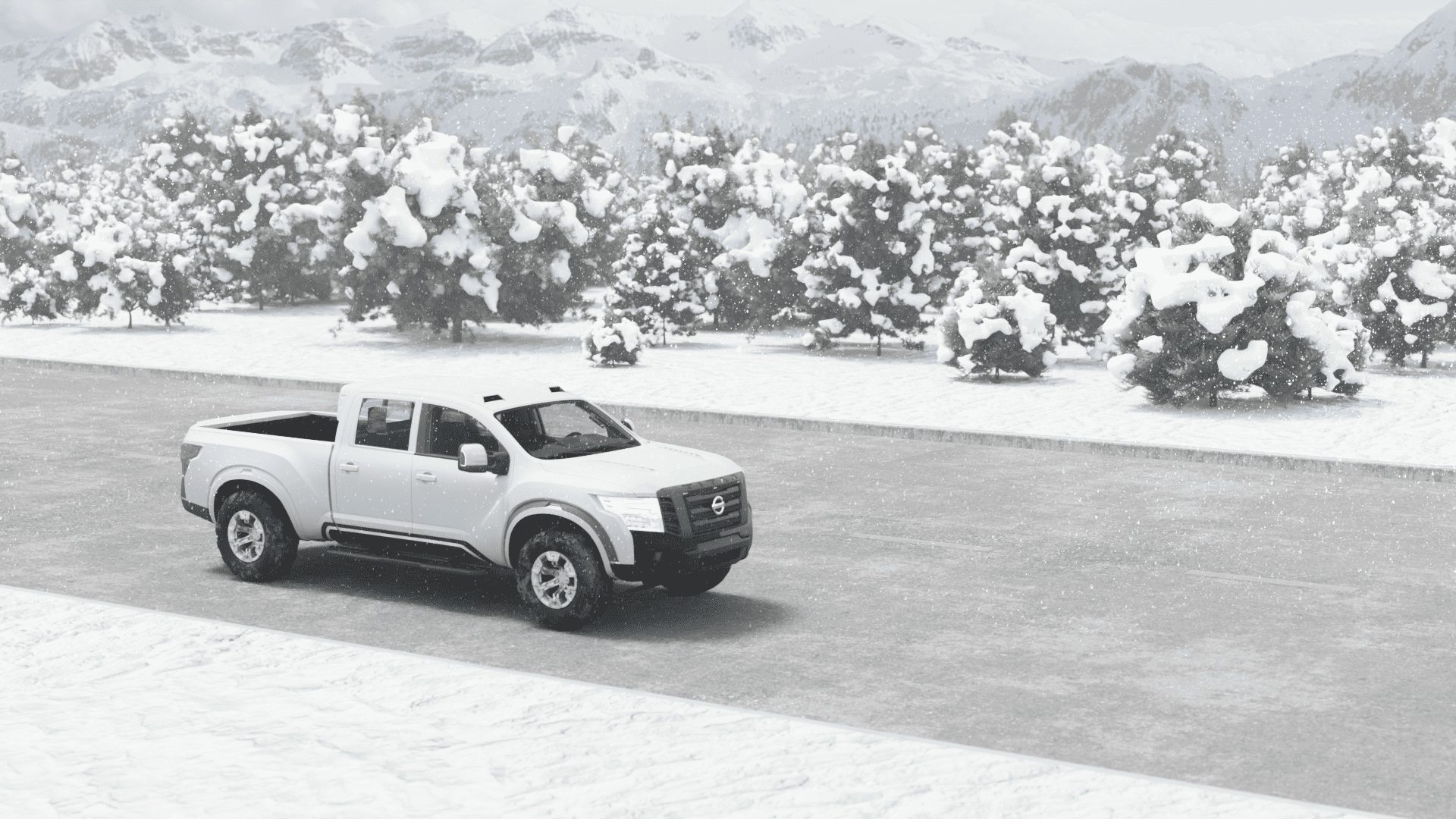
- Low Traction: Icy and snowy roads reduce tire grip. The lack of traction leads to sliding, making it difficult to control your vehicle, especially when braking or turning.
- Poor Visibility: Heavy snow reduces visibility, making it hard to see other vehicles, road signs, and even the road itself.
- Black Ice: Black ice is a thin, transparent layer on the road, almost invisible to drivers. It’s particularly dangerous because it’s unexpected, and vehicles can quickly lose control when they hit these patches.
- Road Obstructions: Snow piles can block views and roadways, requiring extra effort to navigate through.
- Vehicle Strains: Low temperatures can weaken a vehicle’s battery, tire pressure, and fluid levels.
- Falling Objects: Watch for falling branches or debris during storms.
10 Tips to Stay Safe During a Snowstorm
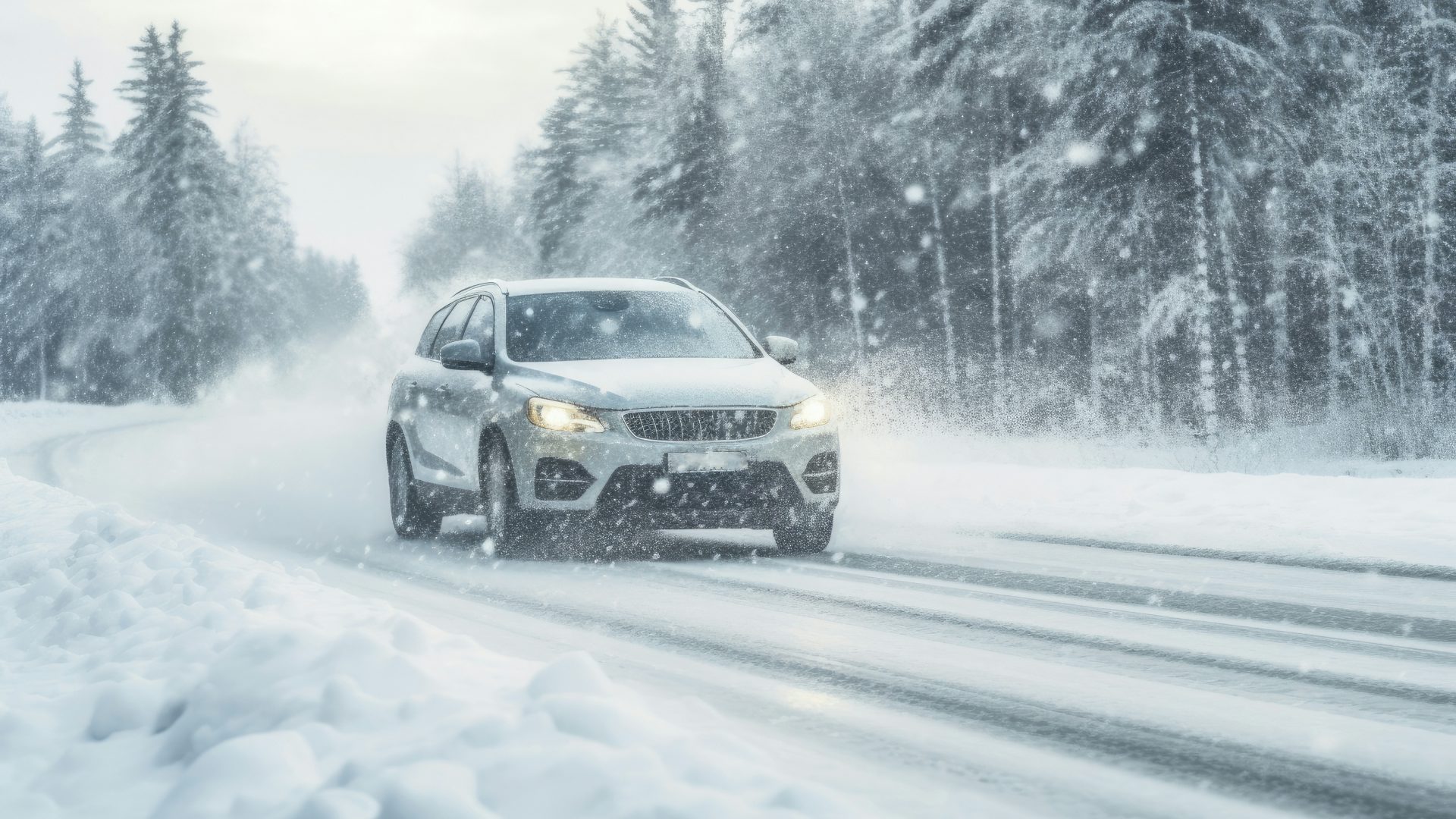
1. Check the Weather
Before leaving, visit weather.gov for the latest weather updates. Temperatures below -20°F can be tough on your car. Things like your battery and fuel lines might not work right. And if winds are blowing over 45 mph, driving gets risky.
2. Avoid Driving If You Can
Over 2000 people die, and 135,000 people are injured on icy and snowy roads every year. This means you want to stay off the road if a winter storm is going on. If the trip isn’t necessary, do yourself a favor and hold off until the storm passes.
3. Prepare Your Vehicle
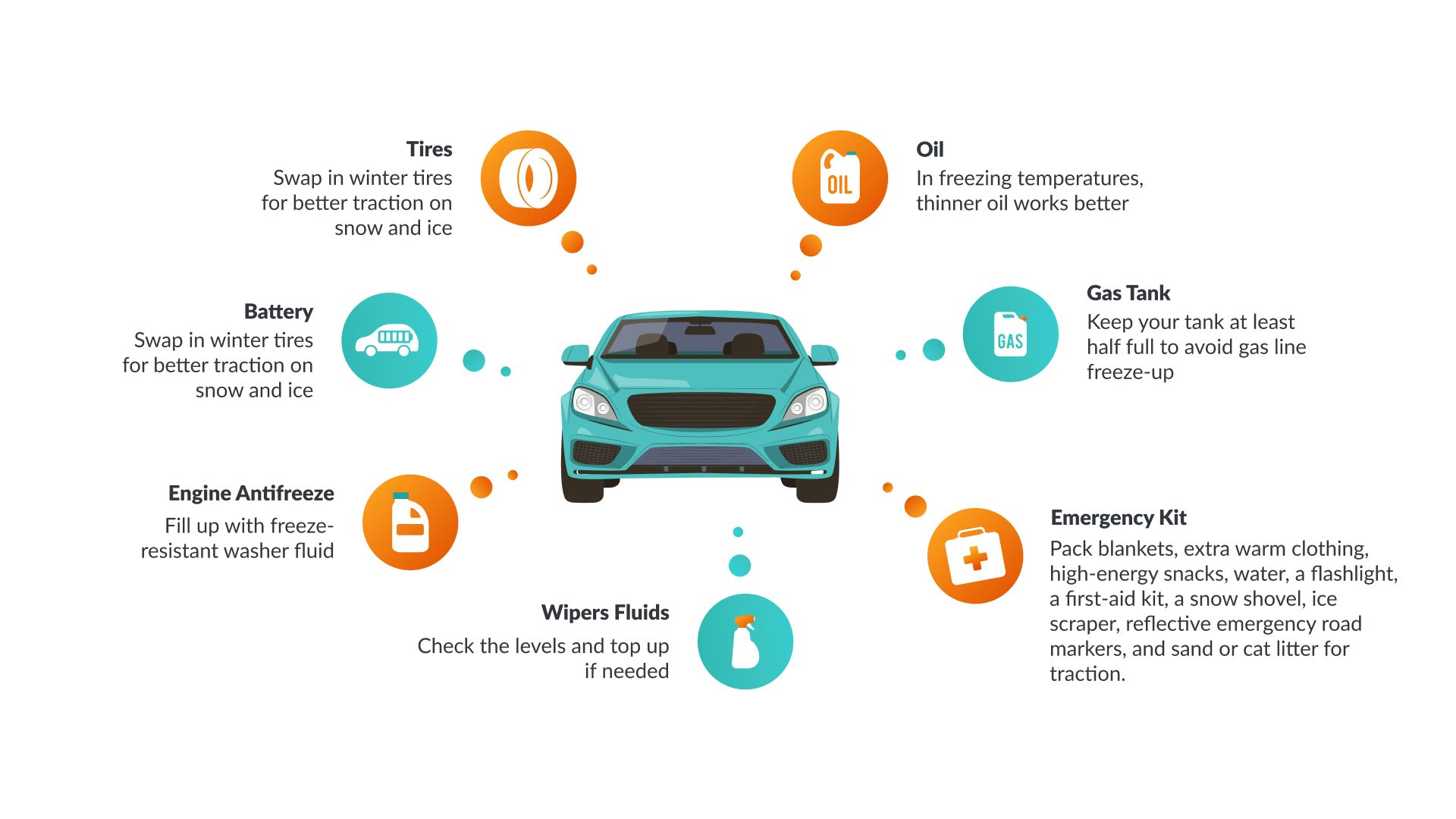
- Tires: Swap in winter tires for better traction on snow and ice.
- Battery: Cold weather drains batteries faster. Get yours tested and replace it if it’s weak.
- Wipers Fluids: Fill up with freeze-resistant washer fluid.
- Engine Antifreeze: Check the levels and top up if needed.
- Oil: In freezing temperatures, thinner oil works better.
- Gas Tank: Keep your tank at least half full to avoid gas line freeze-up.
- Emergency Kit: Pack blankets, extra warm clothing, high-energy snacks, water, a flashlight, a first-aid kit, a snow shovel, ice scraper, reflective emergency road markers, and sand or cat litter for traction.
Always remove all ice and snow from your car. They can blow off into the driver behind you and cause an accident. To ensure clear visibility when driving, you must remove any ice or snow from your windshield, headlights, tail lights, and mirrors.
4. Leave Early
Winter driving means slower speeds. Give yourself extra time so you won’t have to rush, and your trip will be safer.
| Weather conditions | Approximate time needed for covering 30 miles |
|---|---|
| Normal weather | 30 min |
| Snowing | 45 min |
| Windy | 50 min |
| Icy roads | 60 min |
| Snowstorm | more than 60 min |
5. Drive Slow
Drive twice slower than you would in ideal weather conditions. So, if you usually drive at 60 mph, aim for 30 mph or even slower in a winter storm. Sometimes, you will need to slow down to a crawl. Going with less speed gives you more time to react if something goes wrong, like sliding or spotting an obstacle.
Avoid Sudden Moves
Quick turns or fast acceleration can make you lose control on icy and snowy roads. Turn the wheel slowly and smoothly. When you start moving, press the gas pedal lightly. Abrupt acceleration can cause your tires to spin and lose grip.
Go Gentle on Your Brakes
- Pumping Non-ABS Brakes: If your car doesn’t have an Anti-lock Braking System (ABS), use the ‘pump’ method. Press the brakes gently, release slightly if you feel the wheels locking up, and then apply gentle pressure again. It’s like tapping the brakes lightly and repeatedly.
- Steady Pressure on ABS Brakes: If your car has ABS, you don’t need to pump. Just press down steadily and let the system do its job. You might feel a pulsing sensation under your foot – that’s normal.
Turn Slow
Reduce your speed as you approach the turn. It’s better to brake while your car still moves straight than while you’re turning. Begin your turn with a smooth, steady movement of the steering wheel. Focus on where you want your car to end up and steer towards where you’re looking. Enter the turn slowly and then gently accelerate out of the turn.
6. Increase the Following Distance
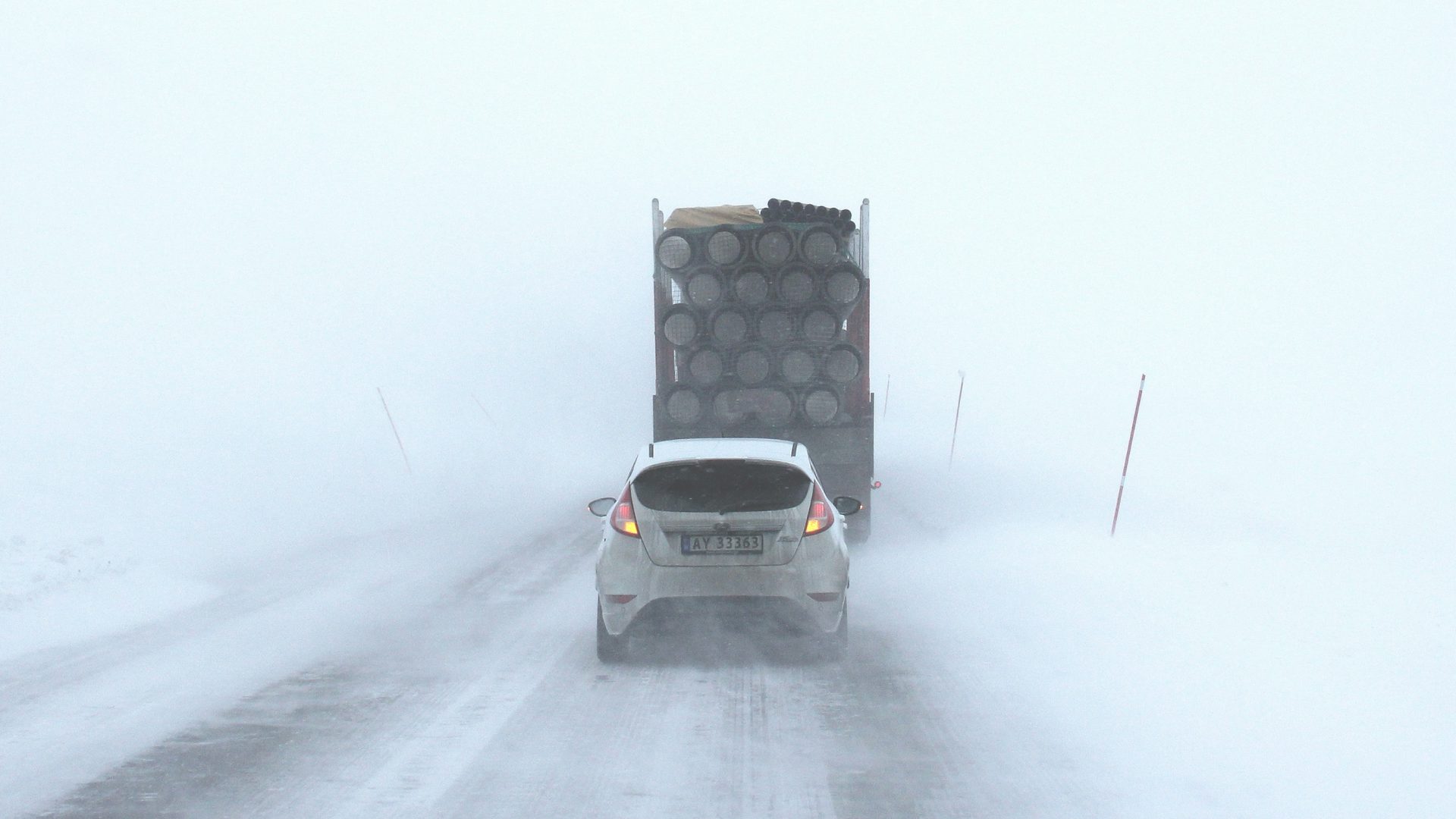
- For Regular Cars: Normally, a 3-second rule is good for dry roads, but in winter storms, double it to at least 6 seconds. That means when the car ahead passes a sign or a tree, it should take you at least 6 seconds to reach the same spot.
- For Big Trucks: If you’re driving a larger vehicle like a truck, go for the 8-10 second gap. Trucks are heavier and take longer to stop, especially on slippery roads.
Just because you’re keeping your distance doesn’t mean everyone else is. If someone’s too close behind you, don’t speed up. Maintain your safe speed and distance, and let them pass when they can.
7. Use Headlights
Use your low beams in heavy snow. High beams can bounce off the snowflakes or fog, making it harder for you to see. If visibility gets very low, you can use your emergency lights to help other drivers see you.
Handling Whiteouts
- Slow down immediately
- Turn on low beam headlights and hazard lights
- Use the right side of the road as a guide
- Pull over if needed
8. Use Lower Gears on Hills

In lower gears, your car has more power but moves slower.
- Going Up the Hill: As you approach a hill, downshift to a lower gear. This gives you more control and steady power, making it easier to climb without straining the engine.
- Avoid Stopping Mid-Hill: Try your best not to stop when you’re going uphill. Stopping makes it hard to get moving again on a slippery slope.
- Going Down the Hill: When going downhill, a lower gear helps to control your speed without relying too much on your brakes. This is important because overusing brakes on a downhill leads to sliding.
9. Don’t Use Cruise Control
Without cruise control, you’re in direct control of your acceleration and braking, which is vital in a storm. Cruise control can accidentally cause your car to speed up on slippery surfaces, increasing the risk of skidding.
10. Stay Calm in a Skid

- Recognize the Skid: Your car might feel like it’s sliding or not responding to your steering.
- Ease Off the Pedals: E ease off whichever pedal you’re on to help regain traction.
- Steer Gently: Look where you want to go and steer your car in that direction. If the rear of your car is sliding left, gently steer left. If it’s sliding right, steer right.
- Wait for the Car to Respond: It might take a moment, but the car should start to align with your steering and regain traction.
- Gently Apply Brakes If Needed: If you have ABS (Anti-lock Braking System), you can apply the brakes gently. Without ABS, lightly pump the brakes.
- Get Back to a Safe Speed: Slowly adjust back to a safe driving speed to the conditions.
Drive Safely with Zutobi
Facing winter roads? Zutobi’s got your back. Our app gives you easy tips and videos to handle lots of driving conditions. Learn the best ways to stay safe with clear advice from real driving instructors. Join Zutobi now.

550+ exam-like questions
All you need to ace your test
Perfect for first-timers, renewals and senior citizens
Recommended articles
Ace your DMV test, guaranteed
Want to Be the Top School in Your Area?
- Simple & automated admin
- More time for teaching
- #1 learning materials for students


